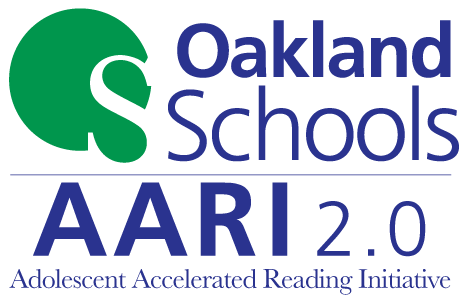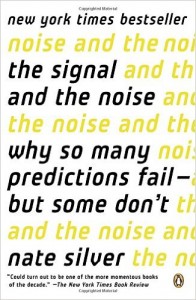
Research & Data

 Over the summer, the literacy researcher Nell Duke tweeted that she saw a shirt that said “Data is the new bacon.”
Over the summer, the literacy researcher Nell Duke tweeted that she saw a shirt that said “Data is the new bacon.”
Both she and I are vegetarians, but I can understand the sentiment. In the education world, data is king–for better or worse. I think this shirt was trying to say that data is everywhere, and everyone loves it (just like bacon). But we should also be careful, because like bacon, too much data can be bad for your health.
In my new role as ELA Curriculum Coordinator for my district, I am responsible for our continuous school/district improvement initiatives, and our multi-tiered systems of support. These two areas, in particular, require data in order to make instructional decisions, progress monitor, and reflect on those decisions.
In our district, we use a data protocol modeled after Bruce Wellman and Laura Lipton’s book, Got Data? Now What? For those who are unfamiliar with the term, a data protocol is a structured way to look at and talk about data. As such, they help shape our conversations, which in turn helps shape our thinking. A data protocol, in particular, allows us to talk about data in a safe and structured way that brings all voices into the conversation.
When thinking about data, it’s useful to get out of the mindset that data has to be numbers. Data sets can represent anything you want to think deeply about. Take, for example, a new data warehouse that we rolled out at the beginning of the year. This is an online repository for data on student demographics, assessments, behaviors, and so forth; it maintains all the data in one place, and allows various reports to be run from that data.
This warehouse turned out to be a good data set for our teachers. After teachers received training in the data protocol, they used the data warehouse platform itself as a data set to be analyzed.
 I am an avid practitioner of yoga, and often my yoga teachers will tell the class to stay in the pose, to give it some “hang time” before we move onto the next pose. That’s the hard part, though. When it’s hard and you want to get out, that’s where the work happens. The same is true when talking about data–the power is in our ability to give ourselves intellectual “hang time.”
I am an avid practitioner of yoga, and often my yoga teachers will tell the class to stay in the pose, to give it some “hang time” before we move onto the next pose. That’s the hard part, though. When it’s hard and you want to get out, that’s where the work happens. The same is true when talking about data–the power is in our ability to give ourselves intellectual “hang time.”
A data protocol allows us to do this. It also prevents us from moving too quickly to judgment and action, or from looking at too much data at once (the “too much bacon is detrimental” stuff).
I coach a Formative Assessment for Michigan Educators team in my district, and I recently had the amazing opportunity to attend a workshop facilitated by Bruce Wellman, which was called “Using Data to Mediate Thinking.” Throughout the day, Wellman reiterated that power and deep understanding emerge only when we’ve allowed ourselves the time to observe the data without evaluation and just be uncertain, because “uncertainty is the foundation of inquiry and research.”
Wellman and Lipton’s data protocol is broken into three phases:
Like bacon, data is great, but too much of it or rushing through it can be a problem and won’t yield the solutions we need to improve teaching and learning. Allowing ourselves a dedicated time and way of talking about data can help us resist those tendencies.
 Jianna Taylor (@JiannaTaylor) is the ELA Curriculum Coordinator for the West Bloomfield School District. Prior to this role, she was a middle school ELA and Title 1 teacher. She is a MiELA Network Summer Institute facilitator and is an Oakland Writing Project Teacher Leader. Jianna earned her bachelor’s degree from Oakland University and her master’s degree from the University of Michigan. She also writes reviews of children’s books and young adult novels for the magazine School Library Connection.
Jianna Taylor (@JiannaTaylor) is the ELA Curriculum Coordinator for the West Bloomfield School District. Prior to this role, she was a middle school ELA and Title 1 teacher. She is a MiELA Network Summer Institute facilitator and is an Oakland Writing Project Teacher Leader. Jianna earned her bachelor’s degree from Oakland University and her master’s degree from the University of Michigan. She also writes reviews of children’s books and young adult novels for the magazine School Library Connection.
 Back in part one of this post, I explored a problem that my PLC had while attempting to gather accurate data from student assessments.
Back in part one of this post, I explored a problem that my PLC had while attempting to gather accurate data from student assessments.
This post, while still recognizing some problems with data, is more upbeat, and provides some reassurance that you can (and should!) continue to gather and use data.
In my last post, I described how the word primitive was a foreign term even to some “A” students, and how this proved to be a problem for an assessment on the use of textual evidence. Beyond such content-specific vocabulary, there’s a secondary issue of assessment lingo: we ask kids to examine, analyze, compare, and evaluate, but few teachers directly instruct exact meanings for these terms.
The solution here is simple, but often bothers English teachers: define terms for the kids. When students ask you what you mean by contrast, you should be willing to explain that for them every time.
Why? Because the term itself isn’t the skill you want data about. If diction is the learning target, independence is obviously an expectation. For all the other assessments, though, you’re damaging your own data if you don’t make sure the students understand every word.
Here’s one of the most regular, self-inflicted data failures we bring upon ourselves: writing questions that attempt to assess too many things at once.
If I’m writing a short-answer question for an assessment about a passage’s tone, my expectation is for:
Even without getting into partially correct responses, you can see where my expectations have created six (!) potential point reductions.
But what have I done to my data if I take off one of two possible points for, say, not including a quote? If students paraphrased the text effectively and were right about the tone of the passage, then they’ve actually provided me two separate pieces of data about two different learning goals; they have mastered tone analysis, but they are deficient in using textual evidence to prove their arguments.
 When we conflate the two and give them a ½ on the question, we have provided ourselves a sloppy data point. And by the time we’ve graded a set of 120 of that assessment, we might come to a wrong-minded, broad conclusion that sets the class back needlessly. Do they even know what tone is? Or are they just averse to quotes?
When we conflate the two and give them a ½ on the question, we have provided ourselves a sloppy data point. And by the time we’ve graded a set of 120 of that assessment, we might come to a wrong-minded, broad conclusion that sets the class back needlessly. Do they even know what tone is? Or are they just averse to quotes?
Consider that tone example once more. Does the question need to be rewritten? Maybe not.
As long as you’re willing to grade the assessment question for only the core skill (tone or textual evidence, but not both at once), then it can provide you some excellent data.
Writing questions that address one clear skill is ideal. But sometimes a question that entails multiple skills can be highly useful—as long as you aren’t attempting to score it for every skill at once.
Logic suggests a problem with this, though. Even if I narrow the learning target I’m assessing, it doesn’t clarify the problem’s source. Did a student choose her quote poorly because she doesn’t know tone, or because she lacks the ability to choose textual evidence well?
The solution to this, I think, is the post-assessment tool box most teachers already put to use. Conference with students for a couple minutes. They can speak effectively to where things went wrong, and data then becomes highly reliable.
When you don’t have time for one-on-one conferencing, having students self-reflect while you go over the assessment as a class can be just as useful. Ask students to make follow-up marks that you can look over later (“T” meaning “I didn’t understand the tone that well,” or “Q” for “I didn’t know what quote to select.”). This might seem like an inelegant solution, but think about what you’ve created: a robust data set that includes your initial impressions of their skills, alongside a self-evaluation where students have provided input on exactly what skill failed them.
There are obviously dozens of other solutions to the problem of inexact data, but I think the simplest takeaway is to be vigilant about communicating what you want your students to know, and explicit about how your grading rubric measures each learning goal in isolation.
It takes time to fix these sorts of systemic problems. But I’d argue that it amounts to less time than we spend reviewing concepts in class that we’ve misidentified as problematic, having listened to the lies of Bad Data.

Michael Ziegler (@ZigThinks) is a Content Area Leader and teacher at Novi High School. This is his 15th year in the classroom. He teaches 11th Grade English and IB Theory of Knowledge. He also coaches JV Girls Soccer and has spent time as a Creative Writing Club sponsor, Poetry Slam team coach, AdvancEd Chair, and Boys JV Soccer Coach. He did his undergraduate work at the University of Michigan, majoring in English, and earned his Masters in Administration from Michigan State University.
 I think it’s safe to say that there’s a bit more mathematical calculation in your normal English classroom pedagogy than there was, say, five years ago.
I think it’s safe to say that there’s a bit more mathematical calculation in your normal English classroom pedagogy than there was, say, five years ago.
And you know what? That’s a good thing—a great thing if you’ve found meaningful ways to use the data gathered from formative and summative assessments.
But data can also be pretty misleading.
The idea of using data to improve instruction has always been presented as a simplistic and elegant solution: gather data that shows which students miss which questions and, voila!, you know where to direct differentiated instruction, to help every student reach mastery of the learning goals.
To wit: An easy question about the tone of an author yields 90% of your students who correctly identify and explain the tone, but the second tone question on the same assessment—testing the same learning goal but providing a much more challenging passage—reveals that only 50% of your class can really decipher tone when the going gets tough (or the tone gets subtle).
This is really fantastic information to have! Ten percent of your kids need to go back and review their notes and probably do some formative practice. But there’s another 40% who need to work on applying their newfound skill. They clearly know what tone is, but at some point when the tone isn’t smacking them in the face, they actually aren’t that great at recognizing the trait in writing. The needs of these two groups are different, but now you know whom to direct to which formative task!
 The funny thing about data, though, is that numbers aren’t as clear and objective as all those charts and bar graphs would have us believe. If you don’t want to take an English teacher’s word for that, get ahold of Nate Silver’s excellent book The Signal and the Noise, which reveals just how difficult it can be to get data to tell you the truth.
The funny thing about data, though, is that numbers aren’t as clear and objective as all those charts and bar graphs would have us believe. If you don’t want to take an English teacher’s word for that, get ahold of Nate Silver’s excellent book The Signal and the Noise, which reveals just how difficult it can be to get data to tell you the truth.
Or, for that matter, believe your own experience, since I’m fairly certain you’ve also experienced the sort of data debacle I’m about to describe.
A few years ago, my professional learning community rewrote all of our assessment questions so that they were clearly labeled by learning goal. When we tested a student’s ability to support an argument using textual evidence, the question might look like this:
Using Evidence: Using at least one quote, explain how Jon Krakauer establishes Chris McCandless’s desire to live a more primitive lifestyle in Into the Wild.
Now everything should be clean and easy to parse—if kids get the question right, they have mastered the use of textual evidence. If they get it wrong, they have not. And if they can explain Krakauer’s methods but fail to use a quote, we can presume they’re halfway there.
So would it surprise you to learn that my PLC ended up getting incredibly muddled data from this question? And that we eventually had to rethink how we were interpreting much of the data? Here are some of the issues that we encountered:
Any of these are good reasons to have a careful data discussion in your PLC. But let’s just take that first one—lacking a skill versus lacking vocabulary—as an example.
I couldn’t write off as a trivial minority the students who asked the question (what primitive meant)—these were the grade-concerned kids who were good about asking questions. If they didn’t know the term and said so, then there was a good chance that A LOT of the other kids also didn’t know the meaning of primitive. They just didn’t bother to ask.
All of a sudden, our data about this fundamental writing skill seemed really murky. And this was a learning goal we thought was pretty transparent and objective! There was a sudden temptation to go back to the more instinctive, less numbers-driven approach to gathering feedback about students.
Even though gathering good data in English is tougher than it seems, it is both possible and essential for effective instruction. I’ll revisit my own case study in my next blog post, in order to elucidate a few of the counter-measures my PLC took to help avoid “fuzzy” data points.
In the meantime, think about the next assessment you give to students. Whatever data you take from it, ask yourself whether more than one “theory” about the kids’ performances on it would fit the data you’re staring at.

Michael Ziegler (@ZigThinks) is a Content Area Leader and teacher at Novi High School. This is his 15th year in the classroom. He teaches 11th Grade English and IB Theory of Knowledge. He also coaches JV Girls Soccer and has spent time as a Creative Writing Club sponsor, Poetry Slam team coach, AdvancEd Chair, and Boys JV Soccer Coach. He did his undergraduate work at the University of Michigan, majoring in English, and earned his Masters in Administration from Michigan State University.